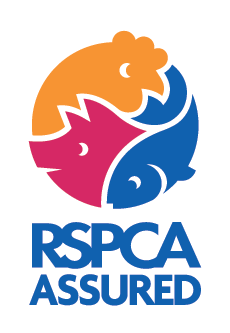The life of an RSPCA Assured egg
For the packaging on an egg (or any animal product) to carry the RSPCA Assured label, the entire process from laying to packing must follow our strict welfare standards. So when you look for the RSPCA Assured logo in your supermarket, exactly what are we assuring you of?
To start at the beginning, eggs come from hens and hens start life as chicks. At every stage of the birds’ life cycle from its first moment in the hatchery to the time it spends on the rearing farm and the laying farm, right the way through to the end of its life, it is cared for according to RSPCA higher welfare standards.

Day one in the life of an RSPCA Assured egg
When egg-laying chicks first hatch, they are sorted by sex. Contrary to popular belief, male hens are not raised for meat, while the females are used for egg production. Selective breeding over the years means that the males of egg-laying breeds do not grow in such a way as to make it practical to keep them for meat.
All RSPCA Assured hatcheries in the UK currently use a method of gassing (although maceration is permitted in some cases). This gassing process takes place very early on, before the chicks are moved from the hatchery to the rearing farms. All male chicks culled in the UK are sold as food in the exotic food chain, going to feed reptiles and raptors, for example. By being part of this food chain, we avoid other chicks being bred in poorer conditions to meet these needs.
Whilst still at the hatchery, the female chicks undergo a process called IRBT, Infrared Beak Trimming. An infrared beam pointed at the chick’s beak erodes the part of the tissue, which causes the very tip to fall off about seven days later. This process is less painful than other methods and is performed to avoid potential issues later in life when the birds might peck at each other and cause a much greater animal welfare issue.
However, beak trimming is an area that the RSPCA is investigating, intending to find alternative solutions which would make any form of beak trimming unnecessary in the future.
From day one to sixteen weeks
The female chicks are then transferred to the rearing farm where they will stay until they are sixteen weeks old. Whilst in the rearing farms, the correct name is no longer chicks but rather pullets. On arrival, the pullets live in 24 hours of light so they can easily find water and feed, and a constant temperature of 32 degrees centigrade. The amount of light is quickly reduced to 23 hours and then gradually reduced over the following sixteen weeks to ten hours per day, by six weeks old they are normally down ten hours of light per day. Over this period, the temperature is also gradually, yet steadily, decreased.
Throughout their lives, the birds have constant access to food that matches their stage of development. This feed needs to have the correct balance of energy, protein, minerals and vitamins. Calcium is of particular importance because it is used in large amounts to produce eggshells.
While at the rearing farm, the pullets receive a series of vaccinations. Before leaving the rearing farms, the pullet will receive any further bespoke vaccinations necessary for the particular laying farms they are going to.
Once collected, the eggs are checked for the following:
External damage, tapping and examining; internal damage, a light is shone through the egg to check it; cleanliness, eye and machine examination
These checks allow the eggs to be graded:
The end of the hens’ lives
The average lifespan of a hen on an egg-laying farm is around 76 weeks, although some farmers choose to keep them up until 90 weeks and in some rare cases, this is also extended to 100 weeks. At this point, the hens are transported on an RSPCA Assured lorry to an RSPCA Assured abattoir.
RSPCA Assured standards insist that all hens are caught by approved catchers and that when egg-laying hens are sent to slaughter, they must go to an approved plant.
From chick to pullet, to hen, to egg and from hatching to supermarket shelf, the RSPCA Assured logo is your assurance that we are working to ensure a better standard of life for farm animals.
*Research is currently being conducted on sexing chicks before they hatch so that this process could potentially be eliminated. Some producers in Europe are already trialing this, and the RSPCA is very interested in reviewing their data and results.
